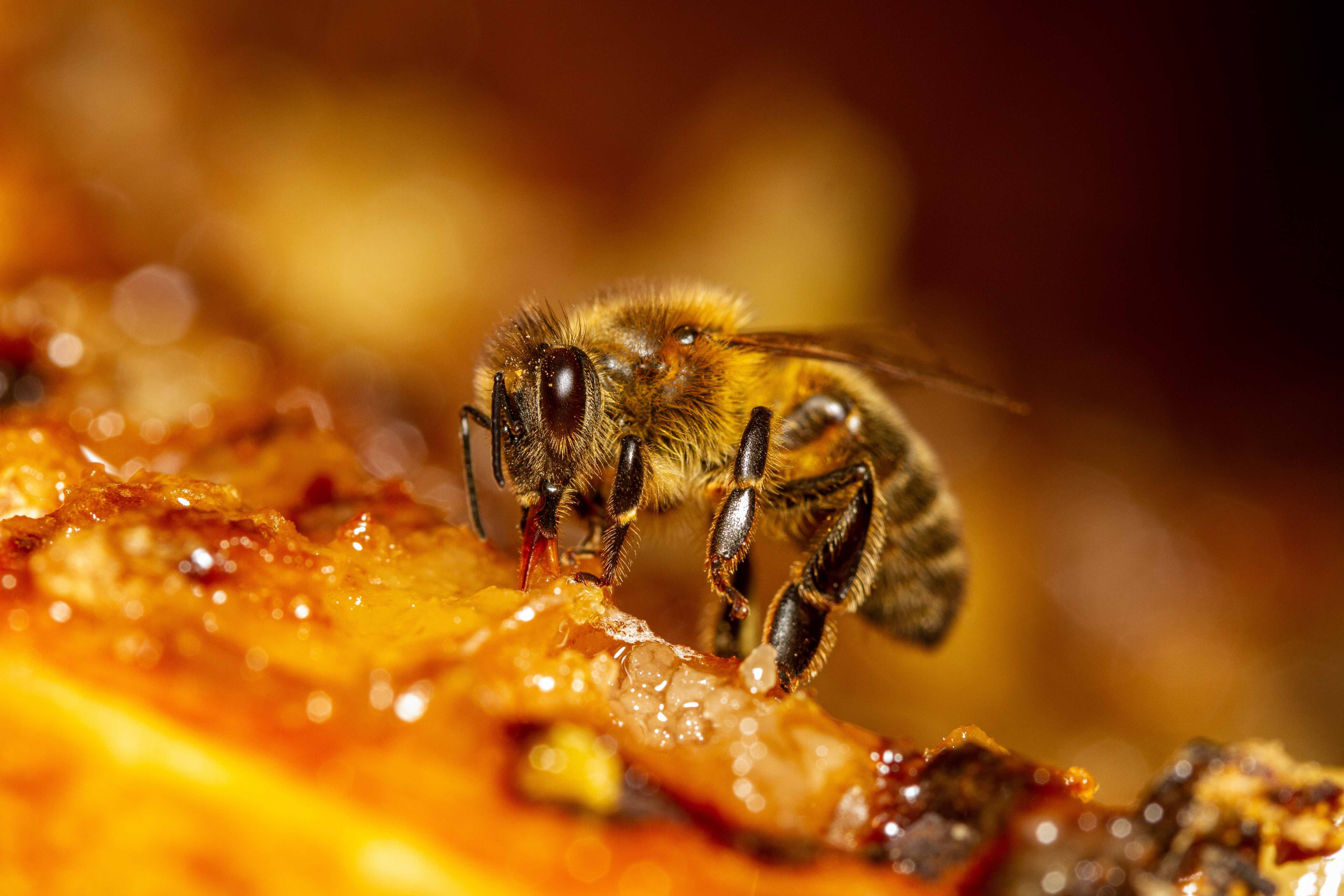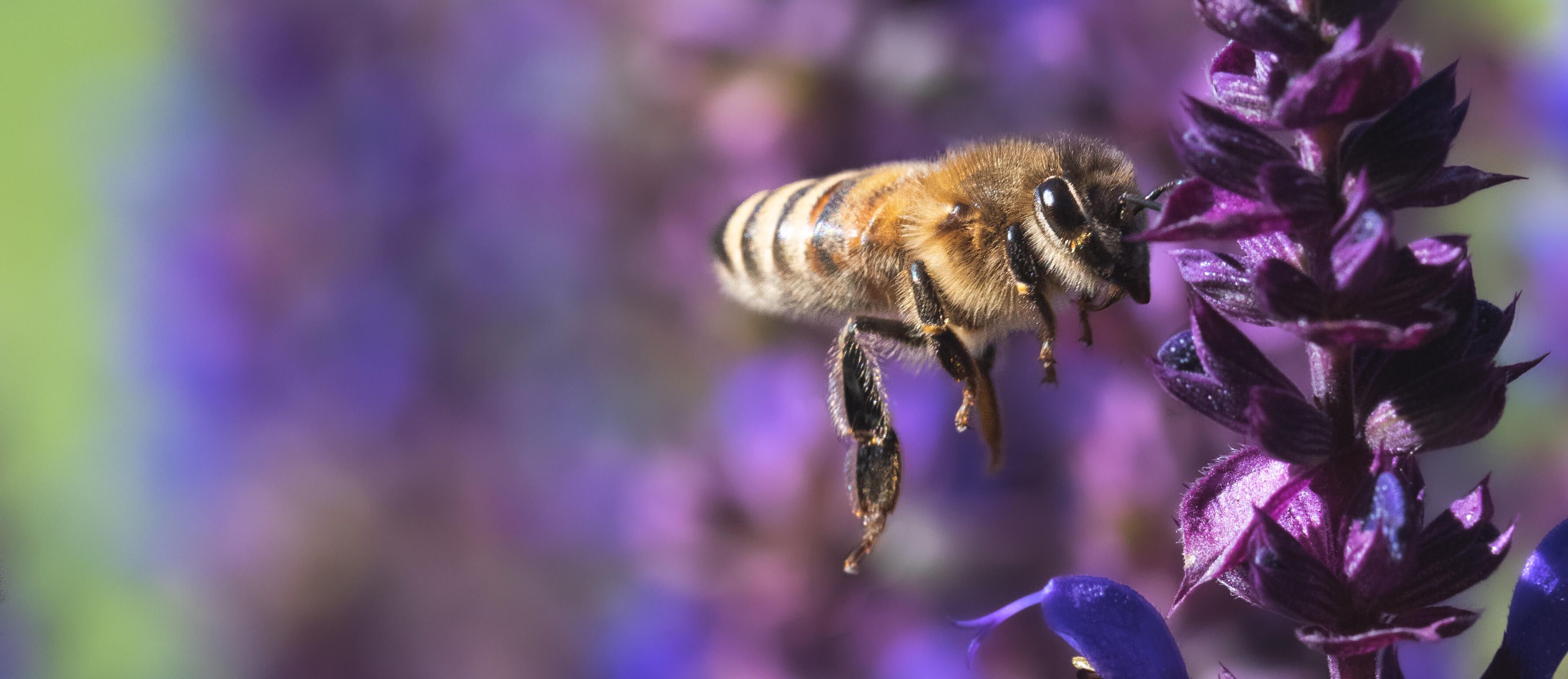Bees - Nature's Essential Workers
Author
Published
6/20/2022
We’ve all heard the expression “Busy as a Bee,” referring to someone who is hardworking and always on the go. The simile makes a lot of sense if you know anything about bees. In fact, the more you know about bees, the greater respect you’ll have for these little essential workers.
Of the 1,400 crop plants grown around the world, those that produce all our food and plant-based industrial products, almost 80 percent require pollination by animals. Bees, butterflies, insects, birds, and even bats are all animal pollinators. Pollination can also be done by wind and even water, but honeybees are considered the primary players in the pollination game.
We wouldn’t have some of the food we enjoy most like, watermelon, apples, almonds, strawberries, blueberries, cucumbers, cherries, broccoli, and pumpkins without the help of honeybee pollinators. The United States Department of Agriculture estimates that bees add about 15 billion dollars to agricultural productivity in the United States.
So How Does It All Work?
All seed plants require pollination since the plants have separate male and female flowers. Pollen from the male flowers must be carried to the female flowers to produce fruit.
About a third of all our crops are pollinated by bees. Without good pollen transfer, crops would produce small or even malformed fruit. Visits from pollinators result in larger, more flavorful fruits and higher crop yields.
On the flip side, bees need pollen and nectar from flowering plants. The sugars in the nectar (basically a good carbohydrate), power their flight. Pollen is fortified with proteins, oils, and minerals that are essential for the diets of the bee’s larvae.
Worker bees are one of the three types of bees that make up a colony or hive. Worker bees are all female and are the smallest bees. They live for 40-45 days, but they have a long “to-do” list to keep the hive functioning. They spend time cleaning cells, feeding larvae, producing wax, building combs, foraging food, performing guard duty, protecting the hive, keeping the air flowing within the hive by beating their wings, and waggle dancing to communicate the location of food, water, or a new home.

An average beehive can hold around 50,000 bees. When the colony gets overcrowded, the worker bees will decide to make a new queen bee.
Worker bees construct up to 20 wax queen cells, and the current queen lays fertilized eggs in each queen cell. The young worker nurse bees feed the queen larvae with royal jelly, a milky white substance the bees secrete from the tops of their heads. The exclusive diet of royal jelly turns on the female larvae’s reproductive system turning her into a queen.
There is only one queen for the colony, so the first queen to leave her cell will either move a swarm of bees to another location or locate and kill the other potential queens.
Queen bees are the largest bees and lay all the eggs in the colony. Young queen bees go on a mating flight and then store the sperm she collects from multiple matings for the rest of her life, using it up bit by bit as she lays eggs. For the hive to survive, the queen must lay fertilized eggs to create worker bees, which will forage for food and take care of the colony. Queens can lay about 2,000 eggs per day and live up to five years.
Males, called drones, emerge from unfertilized eggs. Drones are fed by the worker bees and their only job is to mate with swarming queens. They will die after mating. Because drones don’t do any of the actual work of the hive, they are evicted from the colony in the fall to conserve food.
Honeybees make honey by taking nectar from flowers and mixing it with enzymes from glands in their mouths and storing it in wax honeycombs until the water content is reduced. Then they cap the comb with a wax seal until the bees need it for food in the winter.
Commercial Beekeepers
As natural pollinators like bumblebees and wild bees suffer because of the loss of habitat, commercial beekeepers have become more and more important to the success of most vegetable and fruit farmers. Without commercial beekeepers, we wouldn’t have some of the foods we enjoy.
Commercial beekeepers are those with 300 or more colonies. Pollination services and honey production are the primary revenue sources for commercial beekeepers. Other revenue sources include bee stock, queen production, and wax sales.
.jpg)
Generally, commercial beekeepers have a variety of pollination contracts, with an average of four different crop rentals per colony each year.
Every January and February over 2 million hives from around the United States are put on flatbeds and trucked to California to pollinate over 1 million acres of almond orchards. California uses three-fourths of the honeybee colonies in the U.S., and they use them for a very short period.
Almond orchards also use other bee species in addition to honeybees. Blue orchard bees collect dry pollen on their bellies and scatter pollen more efficiently than honeybees. They fly erratically across the orchard which is perfect for the almonds that require cross-pollination among varieties. Bees’ tongues differ in length according to species. Bees with longer tongues can get deeper into the flower to gather nectar.
Bees are needed at different times of the season depending on the crop. Beekeepers may start during February in California pollinating the almond crop and then move to other states to pollinate other crops such as berries and apples.
Brittney Goodrich, Ph.D., Assistant Professor and Extension Specialist at Auburn University said, “There is a great demand for pollinations services. The pollination fees that beekeepers are paid for almonds are about $200 per colony. Whereas, for a crop that blooms later, like apples, fees will be around $30 per colony.”3 Pollination fees also depend on the number of bees in the hive. Globally, pollination services have an impact on more than 3 trillion dollars in produce.
Local beekeeper, LeeWayne Elmer, is part of a Utah family co-op that trucks bees to California each year to pollinate the almond orchards, and then trucks the hives back to Utah to pollinate local fruit orchards and lavender fields.
.jpeg)
One of Elmer’s favorite things about being a beekeeper is the fresh honey. He extracts honey each time the bees pollinate a different crop. Honey can taste and look different according to the crops the bees have pollinated. The honey tastes like lavender after the bees have pollinated the lavender fields. Local honey also has the advantage of helping with allergies. Honey lasts indefinitely but will crystalize over time. LeeWayne warns that you should never heat honey in the microwave. The hotter you heat it, the more potential for reducing its nutritional value. He recommends running it under warm water instead.
Factors of Bee Decline
Research at Utah State University Extension identifies several factors that contribute to bee decline.
- Habitat Loss—urban development and other human activities that deteriorate or remove habitat
- Improper Apiary Management—novice beekeepers struggling to properly manage their hives affecting native bees and pathogen inundation
- Pesticides—varying in toxicity to bees, many are harmful when not used as directed
- Climate Change—increased temperatures cause bees to emerge from wintering habitats earlier than normal which can disrupt plant-pollinator interactions
- Pathogens And Pests—diseases can be transmitted within and between pollinator species
- Competition—Utah has about 37,000 honeybee colonies that compete with the state’s native bees which increases competition for essential resources
- Poor Nutrition—bees require a variety of pollen sources to obtain the nutrients they need. Poor nutrition may be the consequence of factors such as reduced pollen and nectar production from increased drought and heat events.
- Colony Collapse Disorder—also known as “disappearing disease” because of the disappearance of worker bees from the colony. The queen and brood (young) and food remain, but without the worker bees, the hive collapses. The cause is unknown, but it’s thought to be due to multiple factors such as pests, diseases, secondary pesticide poisoning, and poor nutrition.
You Can Make a Difference
Given the decline in bee species and how important bees are to human food security, we can all do our part to encourage native and managed bees to our gardens and landscapes. Here are some suggestions from Utah State University Extension.

1. Plant Bee-Friendly Gardens
Plant early blooming flowers, and plant them in groups of three to five of the same plant. The early blooms provide a food source for bees coming out from the winter and the plant groupings are a better food source than planting one single plant.
Plant native plants that bloom throughout the entire growing season. Ensure that you grow pollinator-friendly plants such as mint, herbs, and disc-type flowers with a single row of petals because pollen stores are easier for bees to access.
For a list of water-wise native plants visit www.extension.usu.edu/cwel/native-other.
2. Provide Trees for Bees
Did you know that bees get most of their nectar from trees? When a tree blooms, it provides hundreds — if not thousands — of blossoms to feed on. Trees are not only a great food source for bees, but also an essential habitat. Tree leaves and resin provide nesting material for bees, while natural wood cavities make excellent shelters.
3. Minimize or Avoid Pesticides
Minimize or avoid using pesticides and chemical fertilizers in your landscape, especially in early springs when the blossoms are on. Insecticides applied during bloom are a threat to bees. If insecticides must be applied, select one that gives effective insect control but poses the least danger to bees. Also, try to apply the sprays when bees are less active.
4. No Mow May
Don’t mow your lawn during the month of May to help pollinators get a good start to the pollinating season.
5. Create a Bee Bath
Bees work up quite a thirst foraging and collecting nectar. Fill a shallow birdbath or bowl with clean water and arrange pebbles and stones inside so that they break the water’s surface. Bees will land on the stones and pebbles to drink. Place it in a cool shaded area for bees to rest.
We don’t have to look too hard to find life lessons from bees. Beekeeper LeeWayne Elmer observed, “Bees are so interesting because everyone is working for the good of the hive. If they need a new queen, they will grow a new queen. If they need more drones or more worker bees, they will grow new ones. The common good of the hive dictates what goes on in the hive.”
Who knew how important bees are to the food we eat every day! We have pollinators to thank for one in every three bites of food we take. They are the definition of essential workers!
Want more news on this topic? Farm Bureau members may subscribe for a free email news service, featuring the farm and rural topics that interest them most!
